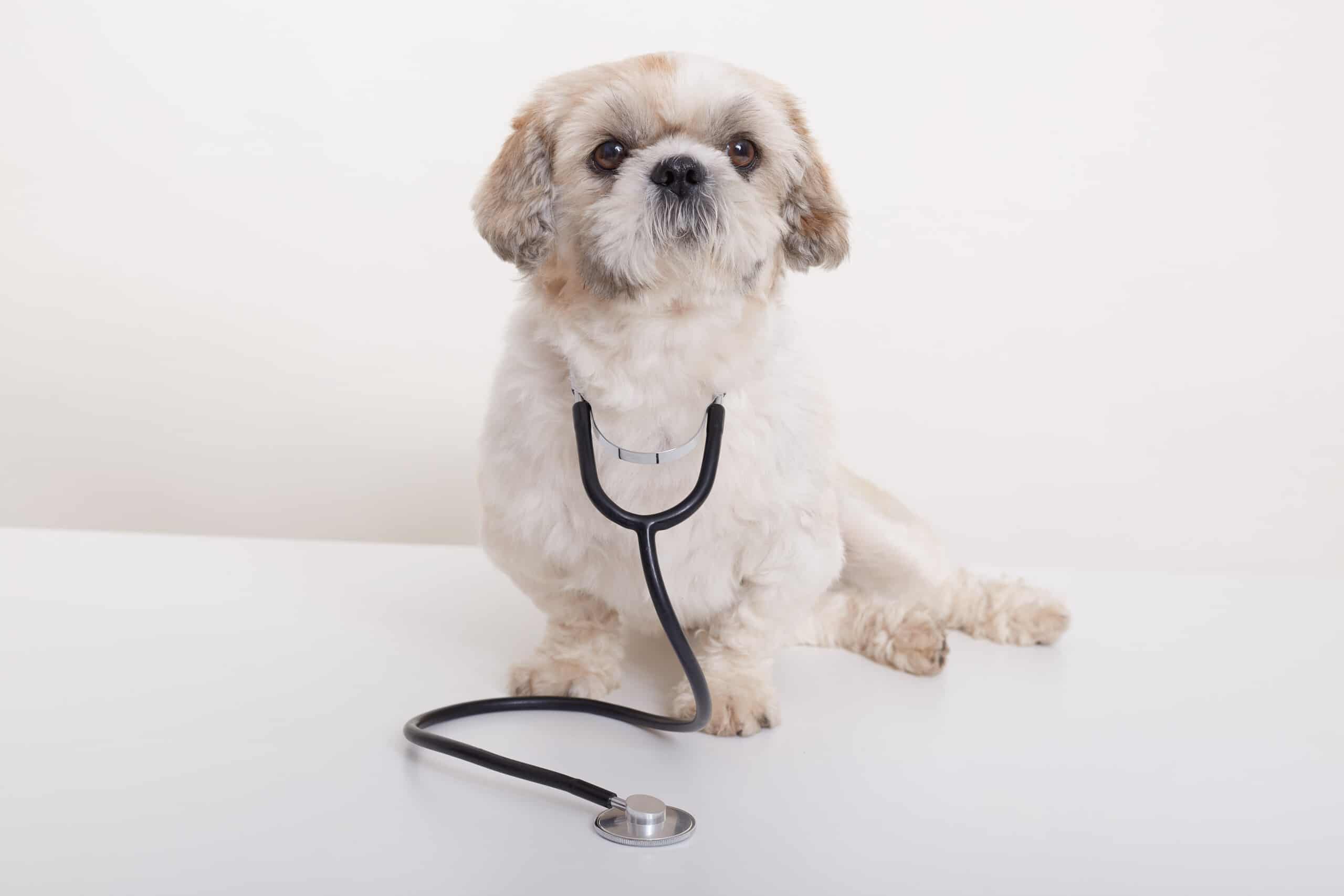Can I Get Pet Insurance That Covers Pre-Existing Conditions?

We understand your love for your pets, which is why you want to take care of them and make them as comfortable as possible when ailments arise. Finding pre-existing condition pet insurance is not always easy. Is it possible to find coverage for a pet with pre-existing conditions?
The emotional and financial stress of navigating care for a pet with pre-existing conditions is sometimes overwhelming. This article will answer your questions about pet insurance, focusing on pets with pre-existing conditions. By understanding how pet insurance works and its limitations, you can make informed decisions to protect your pet’s health and well-being.
Can Pet Insurance Cover Pre-Existing Conditions?
Pre-existing conditions in pets refer to any health condition or ailment that is present before obtaining an insurance policy. Pet insurance companies do not typically offer pet insurance for existing medical conditions or chronic conditions because the pet was not covered by insurance when the condition came to light. These conditions can range from minor allergies to chronic diseases.
For instance, a pet owner does not have insurance at the time of learning about the illness and then signs up for insurance, hoping it will help cover the medical costs to manage the new disease. Insurance is in place in case an unexpected accident or illness occurs. Unfortunately, you need to have insurance already in order for it to cover your pet’s condition.
It is essential to note that pet insurance policies differ in their terms and conditions. One company may provide limited coverage or exclusions for pre-existing conditions, while another may offer specific coverage after a waiting period. Before purchasing a policy, reviewing the terms and limitations is crucial. The Illness & Injury Plan from Odie is a comprehensive pet insurance plan that spells out what is covered and what is not.
What Are Pet Pre-Existing Conditions?
Something to keep in mind when looking for pet health insurance for pre-existing conditions is that just because your pet’s existing ailment will not be covered, you can still seek coverage for unrelated accidents and illnesses.
Pet pre-existing conditions can be classified into various categories. Understanding these conditions can help you evaluate your pet’s health needs and make informed choices.
Curable Pre-Existing Conditions
Curable conditions are conditions with the potential for complete recovery, such as a urinary tract infection or an ear infection. While coverage for curable pre-existing conditions is typically excluded, some insurers may provide coverage after a specified waiting period or if the condition goes away completely and then reoccurs. For example, if your pet does not have an ear infection when the policy begins but acquires an ear infection after a period of time, the insurance may cover the condition.
Incurable Pre-Existing Conditions
These conditions are chronic or lifelong, such as diabetes or heart disease. Insurance providers generally exclude coverage for these conditions as they require ongoing management and treatment. If you have the policy in place and surpass the required waiting period and a chronic condition shows up, then your incurable condition will be covered under the policy because it is not qualified as a pre-existing condition at that point.
Chronic Pre-Existing Conditions
Chronic pre-existing conditions persist over time and require continuous medical care, such as kidney disease or arthritis. Like incurable conditions, chronic pre-existing conditions are usually not covered by pet insurance.
Breed-Specific and Genetic Conditions
Specific dog breeds are more vulnerable to health issues, such as hip dysplasia in large breeds or heart disease in certain small breeds. While these conditions may not be pre-existing in a young pet, they could be excluded from coverage due to breed predisposition or genetic factors. Odie policies do cover breed-specific and genetic conditions, so if you are on the policy when the symptoms show up, your pet’s condition would receive support from Odie.
Bi-Lateral Conditions
These conditions affect both sides of the body, such as cruciate ligament tears. If one leg has a pre-existing condition, it may affect the coverage of the other leg in case the same ailment comes up later. These conditions are likely to appear on the same body part on the other side of the body. It is categorized similarly to a pre-existing condition because it is already present on one side of the body and proven to be likely on the other.
Get familiar with the different types of pre-existing conditions to make informed decisions when selecting a pet insurance policy. By understanding the limitations, you can ensure that your pet’s specific needs are addressed.
Is a Wellness Exam Required for Pet Insurance?
A wellness exam, also known as a veterinary check-up, is a thorough health assessment of your pet before starting an insurance policy. Pet insurance with chronic illness coverage may not be available. The insurance can still take you on and cover any other medical conditions that arise.
While not all insurers require a wellness exam, it can offer several benefits. Pet insurance for older pets with pre-existing conditions is still a good idea, even if the pre-existing condition is not covered. The check-up provides a picture of the pet’s baseline health status, identifies any pre-existing conditions, and ensures your pet is in good health before coverage begins.
Expect the veterinarian to conduct a thorough physical examination and perform diagnostic tests if necessary. This examination helps insurers determine your pet’s overall health and assess potential risks. Some insurers may also require the exam to be conducted within a specific timeframe before policy enrollment.
Access “The Guide to Understanding Pet Insurance” and the article “Pet Insurance: Top 10 Benefits of Pet Insurance from a Vet’s Point of View” to provide valuable insights into the benefits of pet insurance and pre-enrollment exams.
Is There Any Pet Insurance Plan Without a Waiting Period?
A waiting period is a specified timeframe after the policy begins, during which the insurance plan does not cover certain conditions or treatments. Pet insurance for genetic conditions or pet insurance with coverage for prior conditions is not always possible. But if you enroll and have passed the waiting period, you can start coverage for any other injuries or illnesses that arise.
Waiting periods vary between insurers and policies. You will not find pet insurance plans without a waiting period, although the duration and specific conditions subject to waiting periods can differ.
What Is the Duration of a Waiting Period?
A waiting period typically ranges from a few days to a few weeks. Reviewing the waiting period details before purchasing a policy is important, as some conditions may have longer waiting periods than others. Additionally, some policies may have separate waiting periods for accidents and illnesses.
Odie policies have three distinct waiting periods:
- Accidental injuries – 3 days
- Illnesses – 14 days
- Cruciate ligament events – 6 months
What If a Condition Arises During the Waiting Period?
If an accident or condition occurs during the waiting period, it will generally be considered pre-existing and excluded from coverage. The good news is that the policy will typically cover any subsequent accidents or illnesses once the waiting period is over.
Do Wellness Plans or Packages Include Waiting Periods?
Wellness plans or packages, which focus on routine preventive care, may or may not include waiting periods. These plans usually cover vaccinations, annual check-ups, dental care, and other preventive treatments. It is important to review the specific terms and conditions of the wellness plan to determine if waiting periods apply.
Odie’s Wellness Plan is not an insurance plan; it is offered to cover everyday pet expenses like flea and tick medication or vaccinations. There is no waiting period with the wellness plan, and the wellness plan is even offered to pets with pre-existing conditions.
What Does Odie Pet Insurance Cover?
Pet insurance covers various veterinary expenses, providing financial protection and peace of mind for pet owners. Here are the details of the coverage options offered by Odie Pet Insurance:
Illness & Injury Plan
The Illness & Injury Plan is an all-inclusive insurance plan designed to cover a wide range of medical needs for your pet. This plan includes comprehensive coverage for various illnesses, injuries, and veterinary services. Some of the covered items include:
- Veterinary exams and consultations
- Diagnostics (e.g., X-rays, lab tests)
- Prescribed medications
- Surgeries and hospitalization
- Rehabilitation, acupuncture, or chiropractic treatments
- Medically necessary supplies
- Euthanasia and cremation
The Wellness Plan
The Wellness Plan is a monthly membership that focuses on preventive care and covers routine veterinary services.
- Provides reimbursements for routine care items such as wellness visits (exams and vaccines), testing and parasite prevention, dental cleanings and at-home dental care, vitamins, supplements, and more
- Through Odie’s partnership with Petivity, a leader in smart pet products and proactive care, Wellness Plan members can also receive reimbursements for Petivity devices and health kits, as well as eligible Purina food and supplements.
- Total reimbursement up to $700 per year.
Conclusion
Pet insurance is valuable to help with the costs of medical care for your pet. You cannot plan for your pet to have perfect health their whole life, so pet insurance will prepare you with the tools to care for your pet when the unexpected occurs.
While pre-existing conditions are generally not covered, there are still many benefits of pet insurance for a pet with a pre-existing condition. You’ll have peace of mind by getting coverage for additional injuries or illnesses that may occur in your pet’s life.
Read more about the limits and benefits of your pet insurance.



